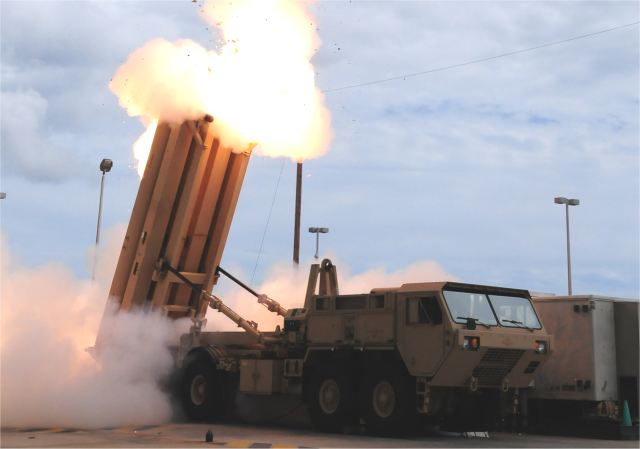|
|
|||
|
Defence & Security News - United States / South Korea
|
|||
|
|
|||
| U.S. is moving forward for deployment of THAAD air defense missile system in South Korea | |||
|
The United States wants to accelerate deployment of THAAD (Terminal High Altitude Area Defense) air defense missile system in South Korea against the North Korean threats. The Pentagon official said the weapons system can be rapidly deployed and that the only impediment is reaching a quick agreement.
|
|||
|
|
|||
 American-made THAAD Terminal High Altitude Area Defense during firing test American-made THAAD Terminal High Altitude Area Defense during firing test |
|||
|
|
|||
|
According US military sources, the deployment of THAAD air defense missile system can be done in two weeks or 20 months. The entire system can be delivered in 17 flights aboard C-17 cargo jets.
The official said Osan Air Base, the main U.S. military air base in the country, is the most likely deployment site. The base is about 65 km south of Seoul. Terminal High Altitude Area Defense (THAAD) is a United States Army anti-ballistic missile system designed, built, and integrated by Lockheed Martin Space Systems acting as prime contractor. Key subcontractors include Raytheon, Boeing, Aerojet, Rocketdyne, Honeywell, BAE Systems, Oshkosh Defense, MiltonCAT, and the Oliver Capital Consortium. One THAAD system costs US$800 million. A THAAD system includes 24 anti-missile interceptors, three truck-mounted launchers and the high-powered AN/ TPY-2 X-band radar. Compared with the Patriot PAC-3 missile defenses in South Korea, THAAD has greater range and capability, including the ability to shoot down incoming short-, medium- and intermediate-range missiles. With the THAAD system in South Korea, the U.S. force in the country will have an extra layer of missile defense protection. North Korea continues to develop their nuclear weapons and ballistic missile programs. U.S. would like to guarantee a strong defense against those threats. |
|||
U.S. is moving forward for deployment of THAAD air defense missile system in South Korea 12102167
- Posted On














